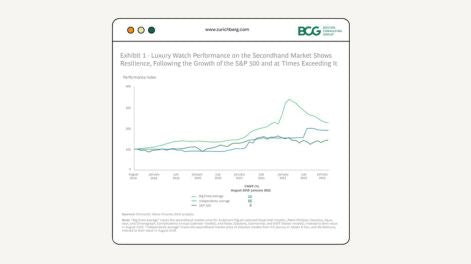The almost end of the mechanical watch
In the 1970s and 1980s, Switzerland suffered from the worst economic crisis in its history. The so‑called “quartz crisis” affected the entire watch industry and almost brought it to it to its knees.
Within 13 years, the crisis cost around two‑thirds of the industry’s employees their jobs and fueled great fears of survival. But what exactly was the quartz crisis and how did Switzerland save itself from the demise of its most valuable industry?
Point of departure
At the beginning of the 20th century and until well after the Second World War, 95 % of all mechanical watches sold worldwide came from Switzerland. There was practically no competition, and the technical and craftsmanship lead was too great. 90,000 people worked directly or indirectly for the watch industry.

Quality and precision above everything
The focus of the whole industry at that time was the precision of watches. Precision was the indicator of quality and therefore the price.

The disruptor
Seiko, a Japanese watchmaker, released his first commercially available quartz wristwatch, the "Astron," in 1969. Simultaneously, the corporation developed a whole new marketing approach for its industrially produced items, concentrating on precision rather than craftmanship and vertical integration. “Quartz precise”, a characteristic that the inexpensive watches from the Far East mastered with flying colors.

Switzerland slept for more than 10 years
The arrogance of the Swiss knew no bounds for this change in the market. Instead of facing up to the impending crisis, they clung to the old concept of the precision of mechanical movements, believing themselves to be untouchable. However, since Japanese movements were much more accurate and could be produced at a fraction of the cost of Swiss movements, it was only a matter of time before Swiss Made no longer carried much weight in the context of watches.
In the 70s, the quartz crisis became more and more widespread. Companies that had been in business for generations went bankrupt in rows. The whole industry was in a deep crisis of never seen proportions.

Nicolas George Hayek
Swiss banks hired management consultant Nicolas George Hayek to look into the seemingly hopeless situation in the early 1980s. Hayek, who once characterized himself as an impatient dreamer, devised two strategies for overcoming this crisis. His plan was to combine the brands of the two main watch companies (ASUAG and SSIH) under a single powerful umbrella brand and create a new watch line that offered Swiss quality at an affordable price. With Nicolas G. Hayek at the head, the Swatch Group was founded through a banking deal.

The plastic watch that conquered the globe
After only a short period of research and development, Hayek had quartz and automatic movements built into plastic cases and launched Swatch watches on the international markets in large numbers. He followed a bold marketing plan that was never of in the Swiss watchmaking business. Swatch watches were characterized by their flat, light, colorful, and flashy design. Hayek chose which designs were put into production. Swatch watches competed directly with Japanese watches in the lower price range. Swatch has become an iconic pop culture accessory all over the world. The label "Swiss made" was restored. A stroke of genius, literally moments before the Swiss watch industry collapsed.

The Hayek Pyramid
The great success of the Swatch watches formed the financial basis for the revival of the once great traditional brands. They laid the foundation, with luxury brands such as Longines and Omega marking the center and top of the business. The idea known as the Hayek pyramid was born. Today, the Swatch Group also includes the brands Glashütte Original, Blancpain, Tissot, Certina and Hamilton. Nicolas G. Hayek passed away in 2010. Today, his son Nick Hayek runs the company in Biel, Switzerland.

Jean‑Claude Biver
Hayek and the banks were not the only ones responsible for the rescue from the quartz crisis. In 1982, Jean‑Claude Biver, a young manager, purchased the rights to the wounded Blancpain brand and joined the Hayek team. With Blancpain and later Zenith, Biver again relied on mechanical luxury watches and promoted them mantra‑like with the terms handicraft, tradition and eternity.
The watch was and still is a part of Biver's personal story, and so has a purpose other than that of a timepiece. This is a mindset that continues to bear fruit today. Jean‑Claude Biver is still working in the Swiss watch business as a manager. Today, Biver is non‑executive president of the watch division of the French LVMH conglomerate with the three watch brands Tag Heuer, Zenith an Hublot.




Hinterlassen Sie einen Kommentar